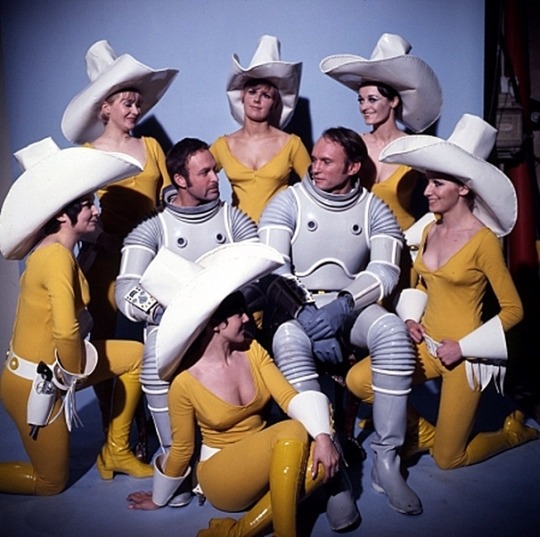Photo


WATCH: A Tornado of Fire Filmed in Slow Motion (video)
24K notes
·
View notes
Text
Self-sustaining botnet made out of hacked home routers

Telcos send routers with default passwords to their customers, who never change them, and once they’re compromised, they automatically scan neighboring IP space for more vulnerable routers from the same ISP.
More than 40,000 infected routers from 1,600 ISPs all over the world have been documented. They’re enlisted for massive denial-of-service attacks, and in their spare time, they crawl the rest of the Internet and recruit more ISP-supplied equipment to join them or snoop on their owners’ traffic.
If this seems bad, remember that the Internet of Things is coming, and every lightbulb in your house will have the smarts to participate in a botnet, and will be supplied by a company that lacks the smarts to prevent it.
Read the rest…
225 notes
·
View notes
Photo

40 maps that explain the internet
Paul Higgins: Really good collection
Full Story: Vox
266 notes
·
View notes
Photo


Crocus designed by Ekaterina Lukasheva | instructions
Carambola designed by Carmen Sprung | instructions
folded by
I made this one in one night because of how much I loved the design.
2K notes
·
View notes
Photo
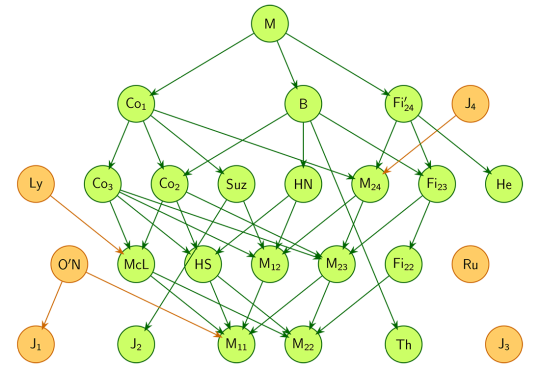
The largest mathematical proof in history is generally considered to be the classification of finite simple groups. The proof consists of tens of thousands of pages, published in several hundred journal articles, by about 100 authors, mostly between 1955 and 2004. It states that every finite simple group is isomorphic to one of the following groups:
a cyclic group with prime order;
an alternating group of degree at least five;
a simple group of Lie type;
the 26 sporadic simple groups.
The diagram above gives an overview of the 26 sporadic finite simple groups and the relations between them. The largest group is called the Monster and has order 808017424794512875886459904961710757005754368000000000. Nineteen other sporadic groups are involved in the Monster as subgroups or quotients of subgroups; together with the Monster group itself they form the “happy family”. The other six groups have no connection with the Monster and are called the “pariahs”. An arrow in this diagram means that one group is a homomorphic image of a subgroup of the other.
168 notes
·
View notes
Photo
The brachistochrone
This animation is about one of the most significant problems in the history of mathematics: the brachistochrone challenge.
If a ball is to roll down a ramp which connects two points, what must be the shape of the ramp’s curve be, such that the descent time is a minimum?
Intuition says that it should be a straight line. That would minimize the distance, but the minimum time happens when the ramp curve is the one shown: a cycloid.
Johann Bernoulli posed the problem to the mathematicians of Europe in 1696, and ultimately, several found the solution. However, a new branch of mathematics, calculus of variations, had to be invented to deal with such problems. Today, calculus of variations is vital in quantum mechanics and other fields.

6K notes
·
View notes
Video
youtube
Origami Wheel Robot
From BioRobotics Lab at Seoul National University
The word, origami, comes from the traditional Japanese art of paper folding. The unique characteristic of origami that realizes three-dimensional structures from two-dimensional materials have long attracted attention from various fields such as design, education and mathematics. Many of today’s engineers are using this oriental art to solve problems. It can be used as an inspiration to some architectural designs, and can also be used as fabrication method of robot design or MEMS process.
By using this origami structure, the deformable wheel can be built without using many mechanical parts; the wheel is built with a single piece of sheet, with specific folds. Moreover, because of the characteristic that the structure constrains its own movement, it is possible to control the shape of the wheel using only a few actuators. When the robot run into the small slit smaller than the wheel diameter, the robot can deform the wheel and it is possible to get through the terrain. The proposed design for the deformable wheel shows the possibility of using origami structure as a functional structure with its own mechanism.
[read more]
99 notes
·
View notes
Video
vimeo
Pianophase.com is a performance and visualization of the first section from Steve Reich’s 1967 piece Piano Phase. Two pianists repeat the same twelve note sequence, but one gradually speeds up. The musical patterns are visualized by drawing two lines, one following each pianist. The sound is performed live in the browser with the Web Audio API, and drawn with HTML5 Canvas.
created by Alexander Chen
524 notes
·
View notes
Link

We’ve scoured the internet to bring you links to the 50 best documentaries available to watch online
58 notes
·
View notes
Photo

Intersection of Dark-Capped Ridges and Dark-Capped Plains
338 notes
·
View notes
Photo

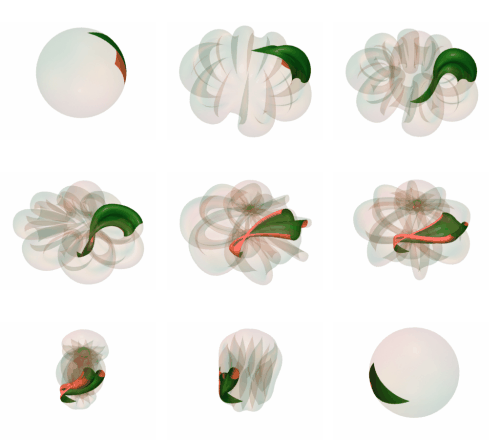
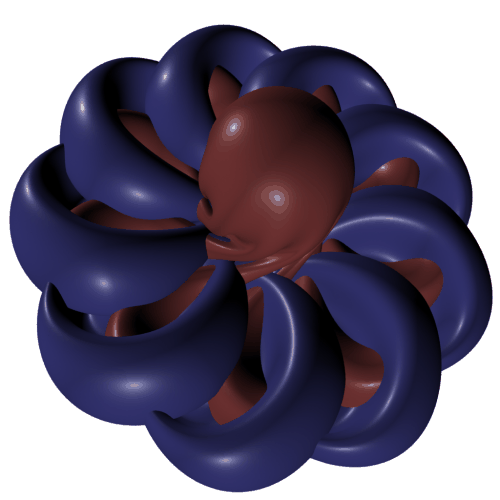

Smale’s paradox
In differential topology, Smale’s paradox states that it is possible to turn a sphere inside out in a three-dimensional space with possible self-intersections but without creating any crease, a process more commonly and historically called sphere eversion (eversion means “to turn inside out”). This is surprising, to those who understand regular homotopy, and is hence deemed a veridical paradox.
Images: The award winning computer animation Outside IN explains the amazing discover, made by Steve Smale in 1957, that a sphere can be turned inside out by means of smooth motions and self intersections, without cutting and pasting. It convincingly demonstrates how valuable vizualization can be in the communication of mathematics - Source & full size at Outsite In - geom.uiuc.edu.
Video: Turning A Sphere Insite Out on Youtube.
630 notes
·
View notes
Photo

The osculating circle at a point on a moving sine wave. This is the circle that best approximates the curve at the point. [more] [code]
5K notes
·
View notes
Photo



To those who celebrate it, Happy Independence Day! Enjoy the parabolic envelopes that form while those bright, sparkling, parabolic curves are etched into the sky tonight…
4K notes
·
View notes
Photo



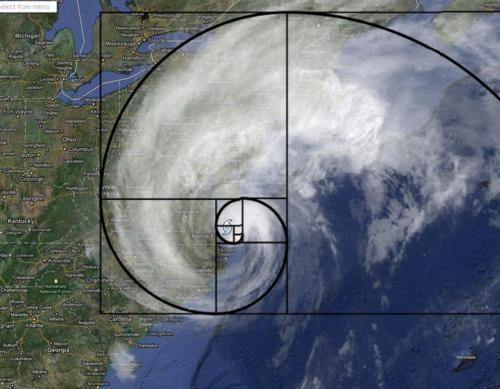

Universe Is Made Of Math, Cosmologist Says
Scientists have long used mathematics to describe the physical properties of the universe. But what if the universe itself is math? That’s what cosmologist Max Tegmark believes.
In Tegmark’s view, everything in the universe — humans included — is part of a mathematical structure. All matter is made up of particles, which have properties such as charge and spin, but these properties are purely mathematical, he says. And space itself has properties such as dimensions, but is still ultimately a mathematical structure.
"If you accept the idea that both space itself, and all the stuff in space, have no properties at all except mathematical properties," then the idea that everything is mathematical "starts to sound a little bit less insane," Tegmark said in a talk given Jan. 15 here at The Bell House. The talk was based on his book "Our Mathematical Universe: My Quest for the Ultimate Nature of Reality" (Knopf, 2014).
Nature is full of math
The idea follows the observation that nature is full of patterns, such as the Fibonacci sequence, a series of numbers in which each number is the sum of the previous two numbers. The flowering of an artichoke follows this sequence, for example, with the distance between each petal and the next matching the ratio of the numbers in the sequence.
The nonliving world also behaves in a mathematical way. If you throw a baseball in the air, it follows a roughly parabolic trajectory. Planets and other astrophysical bodies follow elliptical orbits.
"There’s an elegant simplicity and beauty in nature revealed by mathematical patterns and shapes, which our minds have been able to figure out," said Tegmark, who loves math so much he has framed pictures of famous equations in his living room.
One consequence of the mathematical nature of the universe is that scientists could in theory predict every observation or measurement in physics. Tegmark pointed out that mathematics predicted the existence of the planet Neptune, radio waves and the Higgs boson particle thought to explain how other particles get their mass.
Some people argue that math is just a tool invented by scientists to explain the natural world. But Tegmark contends the mathematical structure found in the natural world shows that math exists in reality, not just in the human mind.
And speaking of the human mind, could we use math to explain the brain?
Mathematics of consciousness
Some have described the human brain as the most complex structure in the universe. Indeed, the human mind has made possible all of the great leaps in understanding our world.
Someday, Tegmark said, scientists will probably be able to describe even consciousness using math. (Carl Sagan is quoted as having said, "the brain is a very big place, in a very small space.")
"Consciousness is probably the way information feels when it’s being processed in certain, very complicated ways," Tegmark said. He pointed out that many great breakthroughs in physics have involved unifying two things once thought to be separate: energy and matter, space and time, electricity and magnetism. He said he suspects the mind, which is the feeling of a conscious self, will ultimately be unified with the body, which is a collection of moving particles.
But if the brain is just math, does that mean free will doesn’t exist, because the movements of particles could be calculated using equations? Not necessarily, he said.
One way to think of it is, if a computer tried to simulate what a person will do, the computation would take at least the same amount of time as performing the action. So some people have suggested defining free will as an inability to predict what one is going to do before the event occurs.
But that doesn’t mean humans are powerless. Tegmark concluded his talk with a call to action: "Humans have the power not only to understand our world, but to shape and improve it."
6K notes
·
View notes


